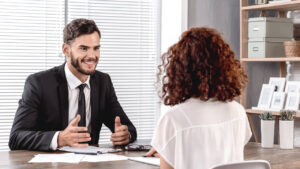Lindsey Bowkett is a consultant, guest author and writer for Connex Academy.
Imagine yourself with the perfect class, and what it would look and feel like in the classroom. It will more than likely include positive students who are motivated to learn and who do not misbehave. As the teacher, you can influence all of this in your classroom through your own direct actions and behaviours. From the moment you enter your school building each morning, you’re teaching. Successful teachers develop the skills to manage these ‘lessons’ inside and outside their classroom so that they are in control of the messages they want to send.
In education, students learn best through a positive school culture and supportive teaching time in the classroom. Teachers should set the bar high for all their learners. But it’s not just about setting the bar; it’s also about giving students the right kind of support to help them reach it. Treating each student as a unique individual and showing them that you believe in their potential is key to making those high expectations a reality.
Here are some ways you can do this:
1. Maintain Control of the Classroom Environment
Creating a well-managed classroom environment is crucial for effective teaching. One key aspect of this control is ensuring that all students are given equal opportunities to participate and contribute to whole class discussions. By creating classroom procedures that allocate the same amount of time for every student to answer questions, share their thoughts, and engage in discussions, teachers create an inclusive and fair learning atmosphere. This not only encourages a sense of equality but also maximises the potential for diverse perspectives and ideas to enrich the classroom experience, fostering a more equitable and engaging learning environment for all.
2. Provide positive reinforcement to maximise learning
Encourage students by offering positive reinforcement as it can be a powerful tool in the educational arsenal for maximising learning. By acknowledging and celebrating students’ efforts, achievements, and progress, teachers can create a motivating and supportive learning environment. Positive reinforcement can come in various forms, such as verbal praise, encouragement, or tangible rewards, and it serves to boost students’ confidence, self-esteem, and intrinsic motivation. When students feel valued and appreciated for their hard work, they are more likely to stay engaged, put in the extra effort, and ultimately reach their full potential. This positive feedback loop not only enhances the learning experience but also fosters a positive and nurturing classroom atmosphere where students are eager to explore, take risks, and grow academically and personally.
Creating an inclusive and supportive school environment involves positively reinforcing answers from each student ensuring that every learner has equal opportunities to engage in the lesson. To enhance engagement, consider regularly reorganising seating plans with a clear purpose in mind, and be sure to offer all students the same opportunities for feedback. This approach fosters a fair and encouraging learning atmosphere, benefiting every child in the classroom.

3. Give Clear and Concise Directions
It can be motivating for students to know what is expected of them. Most students want to do well and will be motivated to meet your expectations. When teachers make it clear what is expected, they will know how they should behave. We can help our younger students with this by establishing routines for the everyday things that happen in your lessons. Many teachers find this approach helpful in maximising learning time in class and stopping valuable time being wasted making every minute count.
Establishing and maintaining routine activities helps to maximise the amount of time spent learning, and the quality of that learning. They can be formed from any class time activity that has a repeating and familiar pattern. There is a lot of research, unsurprisingly, that suggests establishing and maintaining routines leads to positive, predictable, and motivating classrooms. When students can predict the events that happen during their lessons, they are more likely to be engaged and less likely to misbehave or lack motivation.
• Give Clear Directions Combined With Visual Supports
To make learning more accessible and engaging, it’s crucial to give clear directions coupled with visual aids. Clear verbal instructions, when complemented with visuals like diagrams or written explanations, cater to various learning styles, ensuring that every student comprehends and retains the information effectively. This dual approach not only clarifies the path but also reinforces the educational journey, making it more fruitful for all.
When routines are established, and expectations are high they create more learning time and a positive environment for learning. They also create predictable patterns that make it easy to spot when behaviour is not what is expected. Catching and correcting challenging behaviour early makes students feel safer and fosters a warmer classroom environment where learning is more likely to occur.
Finally, the way your students view their own abilities will be affected by your expectations of them. Self-perceptions are often seen as precursors to motivation. If a child believes in their ability, they are likely to be more motivated and put forth greater effort, leading to improved performance (EEF, 2019).
4. Use Technology Effectively to Save Time
Teachers can maximise student learning time by harnessing technology effectively to save time. Embracing technology in the classroom allows educators to streamline administrative tasks, automate grading, and access a wealth of educational resources, enabling them to dedicate more time to personalised instruction and meaningful interactions with students. Digital tools and learning management systems can facilitate communication, assignment submission, and feedback, making the learning process more efficient and convenient for both teachers and students.
Additionally, technology offers opportunities for adaptive learning, tailoring content to individual student needs, and tracking progress in real time. By leveraging these digital resources wisely, teachers can enhance their teaching effectiveness, ensure a more productive use of their time, and ultimately create a more engaging and dynamic learning environment.

5. How we can maximise learning time in the classroom
• Eliminate “Free Time”
Teachers can eliminate distractions, wasted time and maximise every single day in school by not wasting valuable moments. Instead of frittering away minutes on activities like sharpening pencils or falling prey to distractions, we keep students engaged with structured, purposeful routines that maximise their learning experience. It’s all about using our time wisely and crafting an environment that minimises disruptions and optimises focus for everyone.
• Backup Plans
As a teacher having a plan b in place during the school day is like having a safety net for those unpredictable moments in class. When unexpected disruptions or challenges arise, these plans can help a teacher seamlessly switch gears, ensuring that no time is wasted in different ways. Whether it’s a tech glitch or a change in the schedule, having a plan prepared keeps the learning momentum going, preventing distractions and ensuring a smooth educational journey for all.
6. Encourage Independent Practice
One way to maximise time in class is by promoting independent study time. Forming groups during lesson time can be an effective strategy to enhance student learning, enabling them to collaborate, discuss, and support one another while working on assignments or projects. This approach not only fosters independent problem-solving and critical thinking skills but also allows educators to facilitate and guide the learning process more efficiently, ensuring that each student receives the attention and support they need to succeed.
Teaching one another can help students with tasks and make student learning time fun, easing the pressure on the teacher. Plus it can help enhance and reinforce the individual pupils’ own knowledge and understanding by teaching others about subjects in school.
In conclusion, teachers have an array of tools and strategies at their disposal to maximise student learning time. These tools include eliminating free time, using technology effectively, ensuring quick transitions, establishing efficient procedures, maintaining classroom control, providing clear and concise directions with visual supports, having a plan b, and practising procedural steps with students. In schools a teacher should implement these strategies and knowledge and practise meaningful educators can create an environment where every moment is dedicated to learning, ultimately benefiting both students and teachers.





